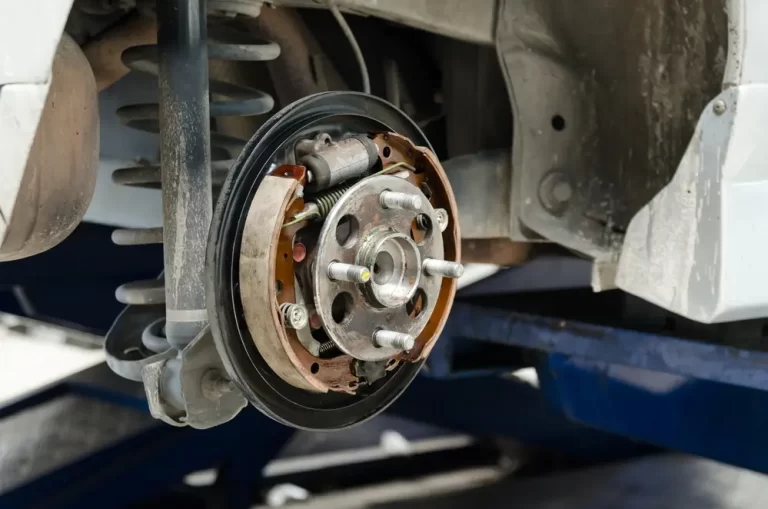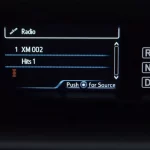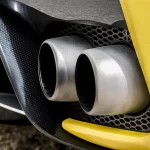The wheel cylinder piston is located inside the wheel cylinder. Many wheel cylinders pop out because they are too small for the borehole to keep them in their place.
If the borehole fills with caked brake fluid, the fluid will keep the piston from sitting in the hole.
The braking system of any vehicle needs to be strong and intact. No one wants to drive a car or truck with faulty brakes.
When there is an issue with the brakes, there are many parts that require inspection. One of those parts is the wheel cylinder and its pistons.
What is a wheel cylinder piston and what is its purpose?
The wheel cylinder piston is part of the vehicle’s drum brake system. The drum brake system is a separate part of the braking system. This braking system revolves around a vehicle’s rear wheel axis.
The wheel cylinder houses the pistons that push out and apply hydraulic pressure to the brakes on the tires of a vehicle. If the wheel cylinder’s piston pops out, the brakes are likely to fail.
What are some issues that could cause the wheel cylinder pistons to pop out?
The first thing you should know is that if there is an issue with the Pistons, then there is an issue with the entire wheel cylinder.
It makes more sense to just replace the entire wheel and to just replace the Piston itself. Also, when you replace the faulty wheel cylinder, you might as well replace the other wheel cylinder on the opposite tire.
The pistons wore down and no longer fit in their borehole.
Manufacturers make pistons out of metal. But heat and a lot of friction surround pistons. As a result, tens of thousands of miles of friction and heat will wear down.
If they wear down to a certain point, they can fall out of the borehole. If they’re no longer in the borehole, your drum break is essentially useless.
The pistons are soaked and caked with brake fluid.
Brake fluid should not be flowing around and coding the wheel cylinder or any other parts of the brakes. If there is a leak, the fluid can make its way into the cylinder and coat the pistons.
When the brake fluid dries, the Pistons will crust over and the borehole that holds the Pistons in place will become sticky.
The pistons won’t be able to move if the borehole is sticky. Besides fixing the brake leak, a mechanic will have to clean all the brake fluid out of the wheel cylinder and wheel drum.
Can you fix a cylinder piston yourself when it pops out?
Yes, you can try fixing a cylinder piston yourself, so you can temporarily drive your vehicle. It all depends on the tools you have on hand.
Note: beware of issues after replacing the pistons in a wheel cylinder
To save money, many vehicle owners ask their mechanics to replace the worn-out pistons in their vehicle’s wheel cylinders. It is simpler to replace the entire wheel cylinder, but more expensive.
If the mechanic doesn’t replace the worn-out pistons with new pistons of the right size, they will loosen from their position. Have your mechanic reinspect the wheel cylinder and recheck the size of the pistons.
Replacing the wheel cylinder
If there is no way to fix the existing wheel cylinder and wheel cylinder pistons, then replace them. Luckily, replacing a cylinder piston shouldn’t cost too much money.
The average cost of a wheel cylinder piston is usually only $50. There’s no need to purchase only the pistons. Replace the entire wheel cylinder.
The cost to hire mechanics to put in the new cylinder piston shouldn’t be more than $100. In fact, if someone charges you $100 to replace a wheel cylinder, they’re ripping you off.
You can replace the wheel cylinder yourself. But, we suggest that only people who have experience working on their own cars and trucks try to replace the wheel cylinder. Replacing this part is not a straightforward task.
How to inspect a wheel cylinder and the pistons
There are few signs that will tell you if there’s an issue within your wheel cylinder. Before getting down on your hands and knees and removing the tire, you should have a wrench and a flashlight.
What to look for?
A flood of braking fluid
If the brake fluid is dripping around the wheel cylinder and its nearby components, then there is a leak in the cylinder.
When you remove the rubber from the wheel cylinder, you should not see any brake fluid or any liquid at all. So any sign of a liquid like free fluid means that the wheel cylinder or the rubber seals are already breaking down.
Caked on brake fluid
If brake fluid has been leaking all over the brake system for a while, there will be grease on the brake shoes and wheel cylinder.
There are ways to remove the crested brake fluid and you can do that after you remove the wheel cylinder and inspect the pistons.
Check the rubber seals for wear and tear
There are rubber seals placed on each side of the wheel piston. The older your vehicle becomes, the older the rubber will be as well. Old crusted rubber will make it difficult for the pistons to move.
How to remove wheel cylinder without removing shoes
Depending on how the manufacturer developed your vehicle’s braking system, you may remove the wheel cylinders without removing the braking shoes.
In order to remove the wheel cylinder like this, first, find the adjuster. Move the adjuster in the path it would normally spin.
By doing this, the braking shoes also move and they will not be in the way of the wheel cylinder.
Now that the brake shoes are out of the way, disconnect the brake line. Then you can remove the cylinder from the backing plate.
Conclusion
Replacing the wheel cylinder piston is difficult, so it is better to take your vehicle to a mechanic. The cylinder piston can wear down from years of use.
There should be absolutely no breaking fluid coding any parts of the wheel cylinder or the wheel drum. Always remember to replace the wheel cylinders on both back wheels.



